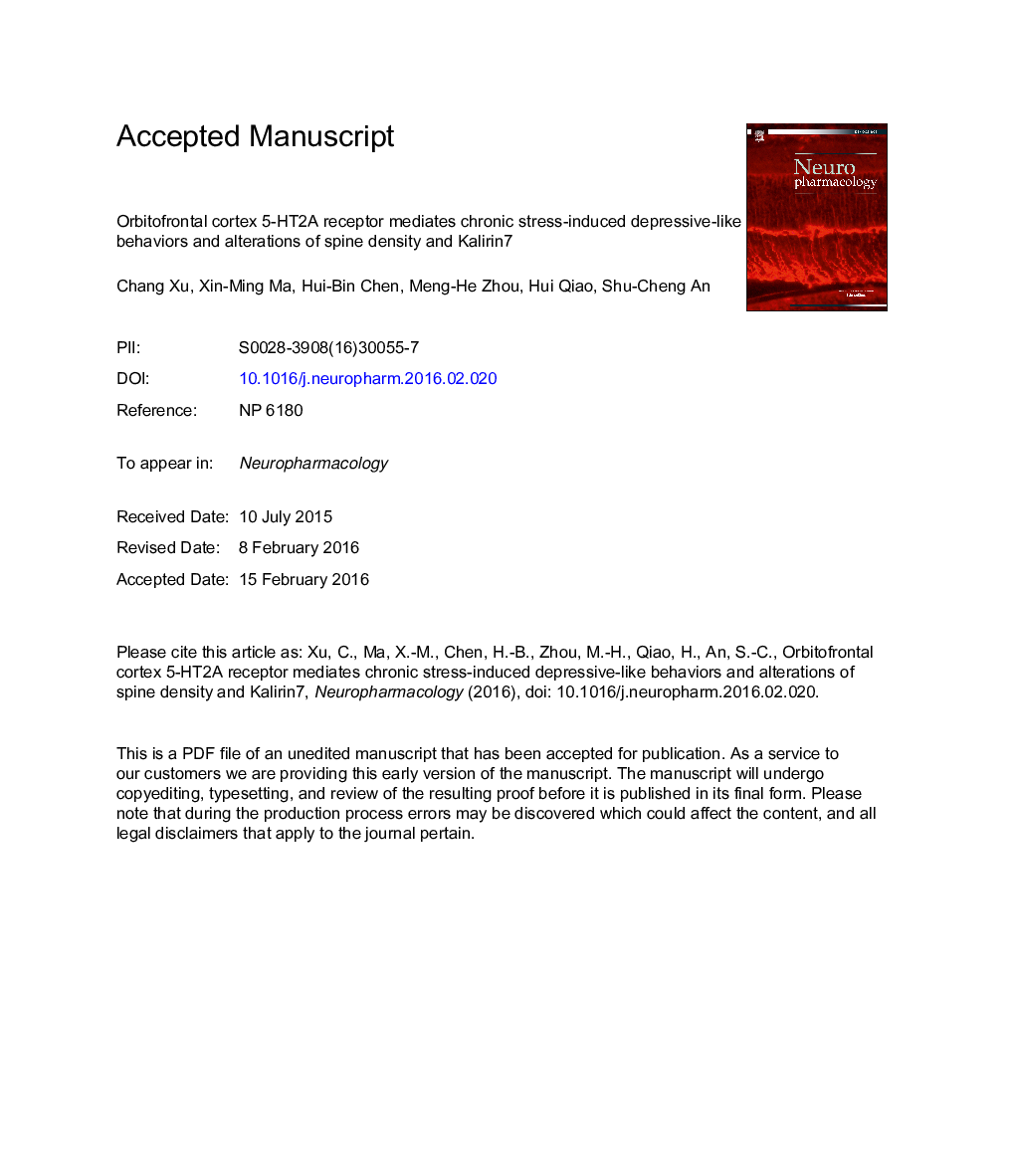| Article ID | Journal | Published Year | Pages | File Type |
|---|---|---|---|---|
| 5813163 | Neuropharmacology | 2016 | 35 Pages |
Abstract
Neuroimaging studies show that patients with major depression have reduced volume of the orbitofrontal cortex (OFC). Although the serotonin (5-HT) 2A receptor, which is abundant in the OFC, has been implicated in depression, the underlying mechanisms in the development of stress-induced depression remain unclear. Kalirin-7 (Kal7) is an essential component of mature excitatory synapses for maintaining dendritic spines density, size and synaptic functions. The aim of this study was to investigate the role of orbitofrontal 5-HT and 5-HT2A receptors in depressive-like behaviors and their associations with Kal7 and dendritic spines using chronic unpredictable mild stress (CUMS), an established animal model of depression. CUMS had no effect on the levels of 5-HT or the 5-HT2A receptor in the OFC. However, CUMS or microinjection of the 5-HT2A/2C receptor agonist (±)-1-(2, 5-Dimethoxy-4-iodophenyl)- 2-aminopropane hydrochloride (DOI, 5 μg/0.5 μL) into the OFC induced depressive-like behaviors, including anhedonia in the sucrose preference test and behavioral despair in the tail suspension test, a significant reduction in body weight gain and locomotor activity in the open field test, which were accompanied by decreased expression of Kal7 and PSD95 as well as decreased density of dendritic spines in the OFC. These alterations induced by CUMS were reversed by pretreatment with the 5-HT2A receptor antagonist Ketanserin (Ket, 5 μg/0.5 μL into the OFC). These results suggest that CUMS alters structural plasticity through activation of the orbital 5-HT2A receptor and is associated with decreased expression of Kal7, thereby resulting in depressive-like behaviors in rats, suggesting an important role of Kal7 in the OFC in depression.
Keywords
Related Topics
Life Sciences
Neuroscience
Behavioral Neuroscience
Authors
Chang Xu, Xin-Ming Ma, Hui-Bin Chen, Meng-He Zhou, Hui Qiao, Shu-Cheng An,
